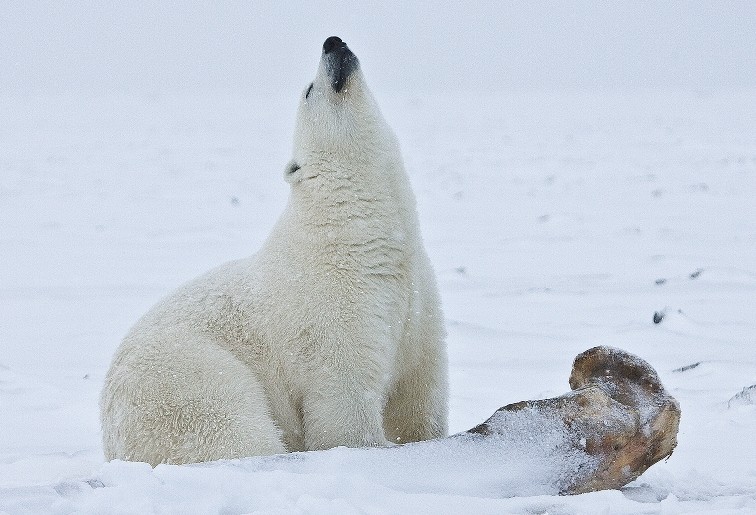
It seems that polar bears may have an even harder time coping with climate change than scientists previously believed.
Seals, which live on sea ice, are the primary source of nourishment for the bears, and they provide the bears with the fat and energy stores they need to successfully reproduce and survive long periods without anything to eat. As the climate changes and arctic ice continues to steadily recede due to longer, hotter summers, finding adequate food has become more and more difficult for polar bears.
However, scientists have speculated that polar bears might be capable of something called “walking hibernation,” a state of reduced metabolism and activity similar to the typical hibernation of a bear, making it possible for them to survive longer periods without food. If this theory was correct, it would mean that polar bears could potentially adapt to cope with dwindling summer resources and that the outlook for the survival of the species might improve.
Unfortunately, a study led by John Whiteman at the University of Wyoming has shown that this is not the case.
To determine the metabolism and activity levels of 30 polar bears living on the Beaufort Sea, Whiteman fixed 26 with movement tracking devices and implanted 17 with temperature loggers. Whiteman and a team of 200 people then tracked the bears across the sea ice in order to monitor them, a feat which was not easy to accomplish—a month-long stay on an icebreaker and several helicopters were required to get the job done.
According to Whiteman, “Logistics were so challenging and so all-encompassing that I really doubt that anyone will be going to the sea ice to measure these bears again.”

The data, however, appear to have provided clear evidence that the bears do not enter walking hibernation when meals are few and far between. Between August and October, the bears were active for 12-22% of the time. Typical hibernation levels are only 1 to 2%.
Instead of entering a hibernation state, polar bears react to a scarcity of food much like any other animal would: they begin to starve. “Their metabolism is very much like a typical food-limited mammal rather than a hibernating bear,” Whiteman said, “If you or I were to be food-limited for weeks on end we would look like the bears’ data.”
The study also found that polar bears are capable of letting their outer core cool while maintaining a high enough inner temperature to protect vital organs during long swims across cold arctic waters in search of food. The researchers reported that one female bear survived a 400-mile (643-kilometer), nine-day-long swim, although it cost her 22% of her body fat as well as her cub.
Being able to survive for such long periods in the water will help the bears in the short term, but Whiteman believes it will not save them if the climate continues to warm. “We’ve uncovered what seems to be a fascinating adaptation for swimming in cold arctic waters, but I don’t think that is going to play as big a role in determining their fate as the loss of hunting opportunities will,” he said. If the warming trends continue, he adds, “We think this data also points towards their eventual decline.”
Now—and this should really go without saying—but this does not mean that all the bears will die tomorrow or even in the next decade or anything like that. Rather, this information is important to our understanding of our biosphere, the various creatures that inhabit it, and how changes in one impact the other. It also helps us better understand how the current warming trend is impacting (and may impact) organisms, which allows us to develop strategies to protect these organisms and (hopefully) alter our own impact in order to keep the biosphere in balance.